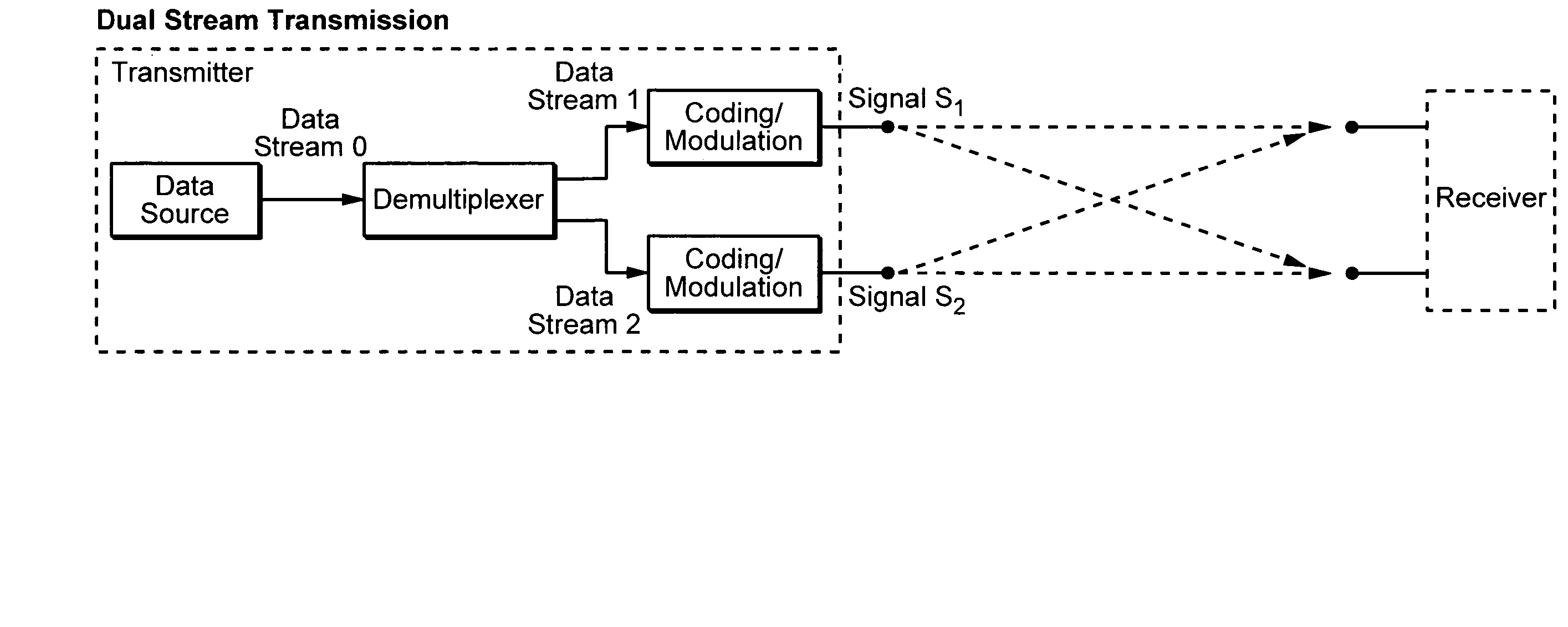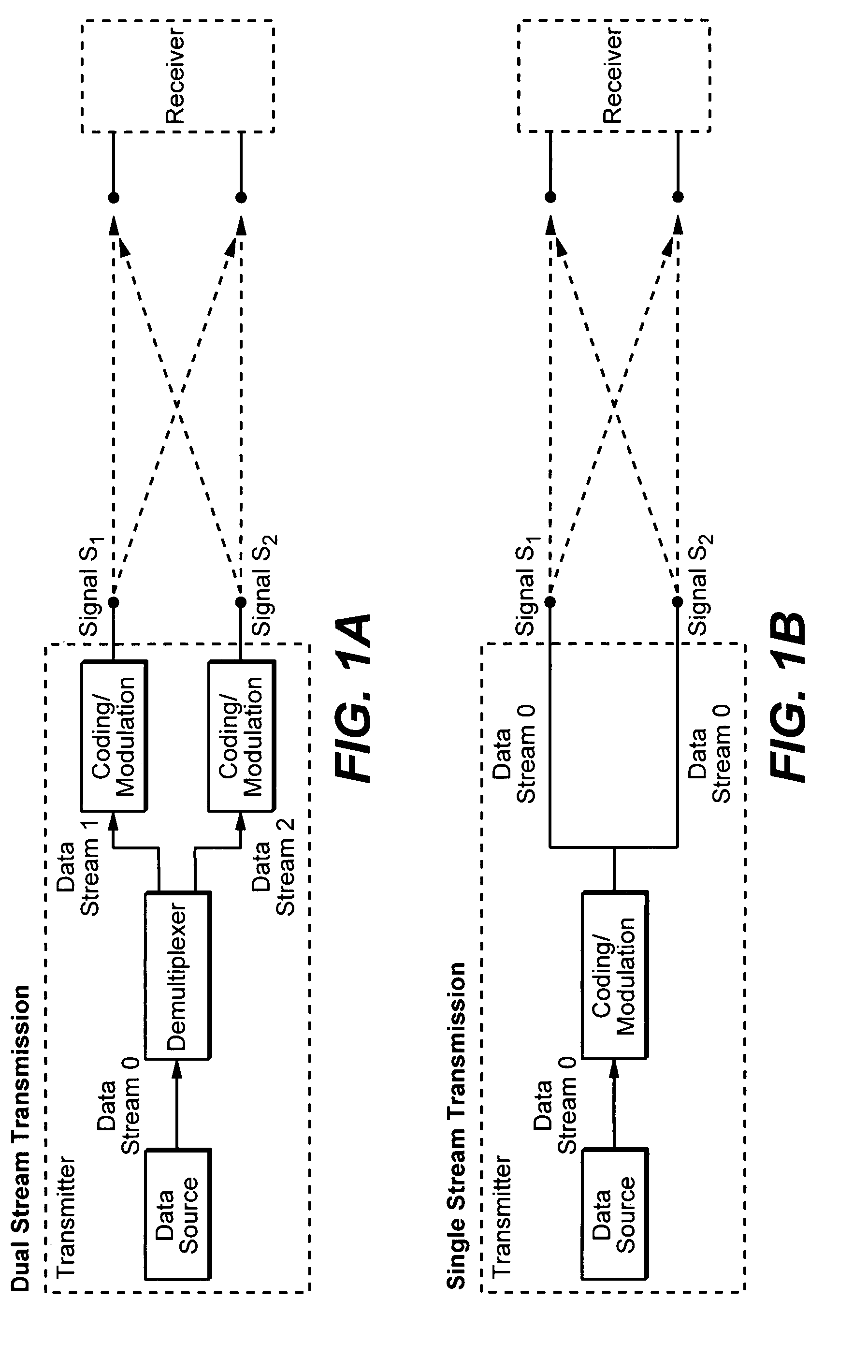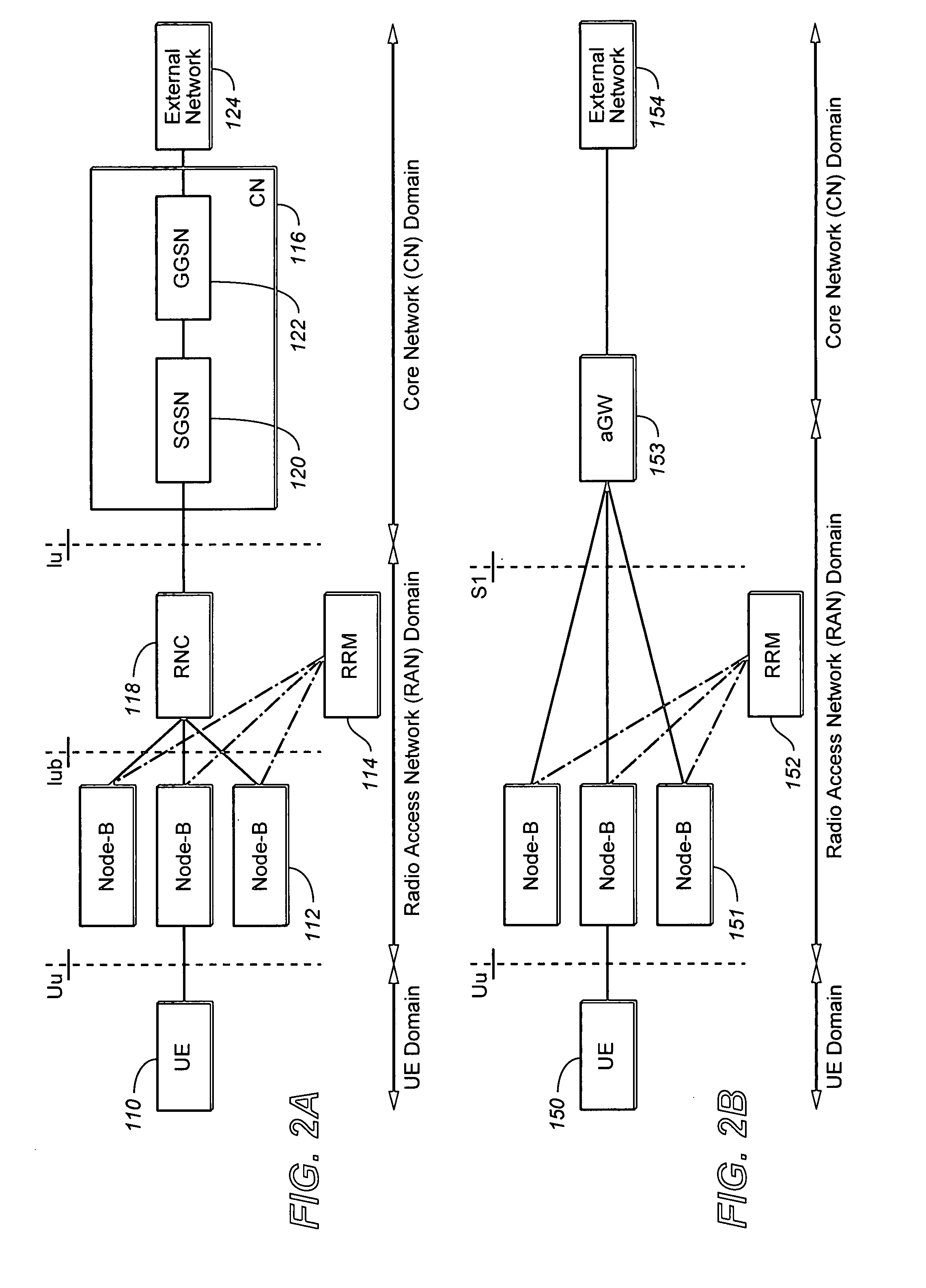System and scheduler for intercell interference cancellation
a system and scheduler technology, applied in the field of cancelling neighboring cell interference, can solve the problems of reducing the data rate achievable for users at the edges of the cell, limited performance of the cellular system, and affecting the data rate of the edge of the cell, so as to reduce interference
- Summary
- Abstract
- Description
- Claims
- Application Information
AI Technical Summary
Benefits of technology
Problems solved by technology
Method used
Image
Examples
Embodiment Construction
[0021]FIG. 2A illustrates an example of a cellular communication system according to embodiments of the invention. The network includes a user equipment (UE) domain, a radio access network (RAN) domain, and a core network domain. The UE domain includes user equipment 110 that communicates with at least one base station 112 in the RAN domain via a wireless interface. The RAN domain may also include a network controller 118 (e.g., radio network controller), such as that used in UMTS systems.
[0022] The core network (CN) 116 includes, in this example, a serving GPRS support node (SGSN) 120, and a gateway GPRS support node (GGSN) 122. The core network is coupled to an external network 124, such as the Internet. The SGSN 120 is responsible for session control, including keeping track of the location of the UEs. The GGSN 122 concentrates and tunnels user data within the core network 116 to the ultimate destination (e.g., an Internet service provider) in the external network 124.
[0023]FIG...
PUM
 Login to View More
Login to View More Abstract
Description
Claims
Application Information
 Login to View More
Login to View More - R&D
- Intellectual Property
- Life Sciences
- Materials
- Tech Scout
- Unparalleled Data Quality
- Higher Quality Content
- 60% Fewer Hallucinations
Browse by: Latest US Patents, China's latest patents, Technical Efficacy Thesaurus, Application Domain, Technology Topic, Popular Technical Reports.
© 2025 PatSnap. All rights reserved.Legal|Privacy policy|Modern Slavery Act Transparency Statement|Sitemap|About US| Contact US: help@patsnap.com



